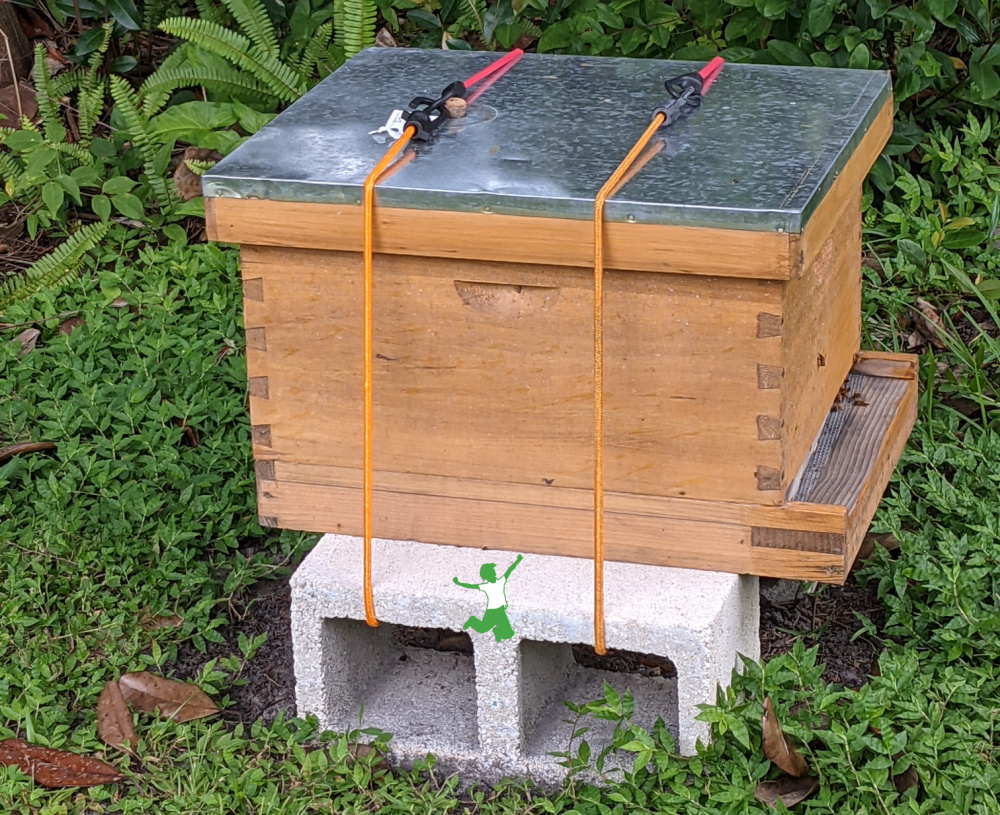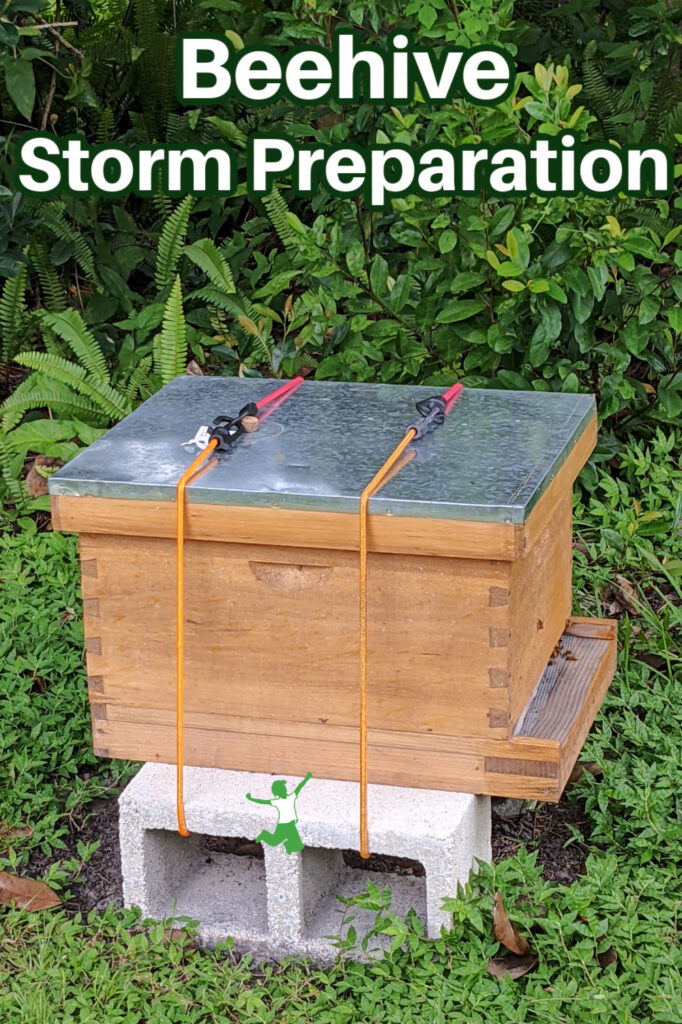Table of Contents[Hide][Show]
How to secure a residential beehive in preparation for a high wind event including a tropical storm or hurricane.

With a Cat 3 hurricane currently bearing down on our community, I spent some time yesterday securing our backyard beehive in preparation for the storm.
I followed the steps suggested by master beekeeper John Morse, founder of Gem Apiaries.
The steps were quite simple, as it turns out!
It did not involve moving the beehive at all, which would introduce an enormous amount of stress to the colony.
For commercial beekeepers with multiple mobile hives with appropriate equipment for transport, it makes sense to simply pick up the hives and move them out of the area completely.
For a residential beekeeper, however, this is not an option.
Securing the hive to withstand high winds is the best approach with as minimal disruption as possible.
To Feed or Not to Feed?
There are different opinions on whether it is a good idea to feed bees with sugar water.
My opinion is that, while certainly not ideal, feeding the hive might sometimes be necessary under extreme circumstances.
A hurricane likely qualifies as this type of event.
Based on John’s recommendation, I fed my hive a quart of nonGMO sugar water. This provides them with ample food to last the 1-3 days of high wind and torrential rain when foraging would not be possible.
Never ever feed your bees a solution of high fructose corn syrup or plain white sugar.
Both of these choices are of GMO origin and likely contain glyphosate residues that can get into the honey.
In addition, be sure to use filtered water to avoid giving your bees toxic chlorine, fluoride or other substances commonly found in tap water.
In other words, be sure to use nonGMO cane sugar blended with filtered water, if you choose to feed your hive before the storm.
Another suggestion is to use a wide-mouth glass mason jar with a nonBPA lid for feeding and avoid plastic.
Securing the Hive
The most important step in preparing your beehive for the arrival of a high wind event like a hurricane is to secure the top of the hive so that it can’t easily get blown off.
Adding weight to the hive is also important to keep it from getting knocked over.
This is accomplished with heavy-duty bungee cords or rope.
As you can see from the photo above, I fastened two bungee cords tightly around the entire hive.
This includes looping the cords underneath and attaching the hive to the two large concrete blocks that serve as its foundation.
The hive bound together with the concrete blocks weighs it down considerably.
In addition, the location of the colony is tucked away with surrounding protective vegetation. Thus, only the strongest winds could topple it. The video below demonstrates this process.
Closing Off Ventilation
A screened bottom board (like this one) is used in Langstroth-style hives to increase ventilation.
I keep mine open most of the year due to the warm temperatures.
I close it up when cold fronts come through to assist the bees in maintaining an optimal temperature inside the hive.
However, in the event of high winds, it might make sense to close this off to prevent wind gusts from coming up underneath the hive, through the screen bottom board, and lifting the hive away from the foundation.
Certainly, if the incoming storm was going to drop the temperature significantly, closing off the bottom ventilation would definitely be a good idea.
In addition, depending on the direction of the wind, it might make sense to close off the entrance to the hive as well.
Given that our community will not be experiencing a direct hit from the hurricane’s most ferocious winds, I have chosen not to close off ventilation.
In addition, the temperatures will still be around 80 °F during the height of the storm, so closing the ventilation might make the inside of the hive too warm.
However, I might change my mind and do it quickly if the storm makes a last-minute directional change.
What is your strategy for securing residential or homestead beehives in preparation for severe storms like a hurricane?









If you choose to feed, bees should get non-GMO WHITE sugar. This post is slightly confusing. Any sugar other than white sugar will eventually kill the bees.
Thank you for clarifying …yes nonGMO white sugar only. Sorry that was confusing on my part.